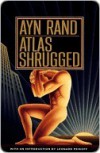The Burning Tigris: The Armenian Genocide and America's Response
 Back in my junior year of college, one of my teachers was a doctoral student of Armenian decent. Her family, in particular, was able to flee Yemen (or perhaps it was Lebanon?), thanks to her dad's work and claim asylum in Canada. Her stories about the pretending to be happy while crossing the most deadly line, where many people were shot, made me wonder who were the Armenians and what were they fleeing. She highlighted the fact that Armenians were hated for being Christian, and that because they were Christian, they were able to exercise more freedoms, such as getting plastic surgery and wearing crazy hair colors. People got plastic surgery just because they could and to flaunt the freedom that they had that Muslims didn't.
Back in my junior year of college, one of my teachers was a doctoral student of Armenian decent. Her family, in particular, was able to flee Yemen (or perhaps it was Lebanon?), thanks to her dad's work and claim asylum in Canada. Her stories about the pretending to be happy while crossing the most deadly line, where many people were shot, made me wonder who were the Armenians and what were they fleeing. She highlighted the fact that Armenians were hated for being Christian, and that because they were Christian, they were able to exercise more freedoms, such as getting plastic surgery and wearing crazy hair colors. People got plastic surgery just because they could and to flaunt the freedom that they had that Muslims didn't.I didn't know anything about the Armenian Genocide. I saw this book at an American Association of University Women book sale, and I picked it up, hoping to learn more about why my teacher fled the country that she did, but instead I've opened up a new area that I didn't even knew existed. I will admit that I picked up the book based on the word "Armenian," hoping to learn more about that group of people.
Peter Balakian presents immense details and primary source material in this book. Particularly important is the epilogue, which includes information about Turkey's denial. Turkey's denial of the Armenian Genocide reminds me of the South's denial of slavery being a factor in the Civil War. Get it together, Turkey and the South! Now I understand why they say Turkey is known for human rights abuses.
Balakian does a great job describing the impact of the Armenian plight on the American people. He includes information from relief efforts, missionaries, generals, and the government, but what he doesn't particularly do is explain how the genocide impacted world events. For example, the Armenian Genocide of 1915 takes place during WWI. I don't think Balakian mentioned WWI at all, except in passing. After reading this book, I am particularly interested in how WWI affected the Genocide or how the Genocide affected WWI. Maybe I just passed over it and don't remember the explanation, but Balakian doesn't really contextualize it, as far as I remember. In our American history classes, we focused more on WWII, so I don't remember much about WWI. Balakian does a better job of contextualizing how the Genocide would affect future events, especially comparing it to the Holocaust, but it's almost as if the genocide was this thing going on in the background that everyone in Europe was trying a blind eye to even though the media reported the events. I understand that the book was specifically about the American response to the Armenian Genocide, but I wish there was more worldwide historical and cultural context. This book shows me that I clearly don't know the history of the Middle East, and I don't know anything about the history of Islam, even though I know Christianity and Islam frequently clashed. Balakian does provide maps, but I often felt like I had no idea what I was looking at, especially since I'm not well-versed in early twentieth century history. This may be more of the fault of the reader rather than the author. I may be asking him to write a completely different book that he had no intention of writing.
I'm left with the questions of how did the Armenians come into existence, and how did they become a part of the Ottoman empire? I mean, heck, where did the Turks come from if that region was historically Armenian? I suppose I should read another book about the Armenians.
Balakian is very repetitive. He uses the same quotes multiple times, particularly from Pat Harrison and Talaat and repeats many facts that he had said just a couple of pages before. I don't remember the first half being very repetitive, but the second half is the worst offender. It's almost as if the book was so big that the copyeditor started slacking and letting things slide.
The book is an eye opener, and I would recommend it to anyone who is curious about the Armenian Genocide and to people who are interested in government corruption and political muscle. If they are like me, they'll ask, "What the heck is Armenian?" Balakian presents a topic that is never taught in American schools but is something that should be included in history lessons.




